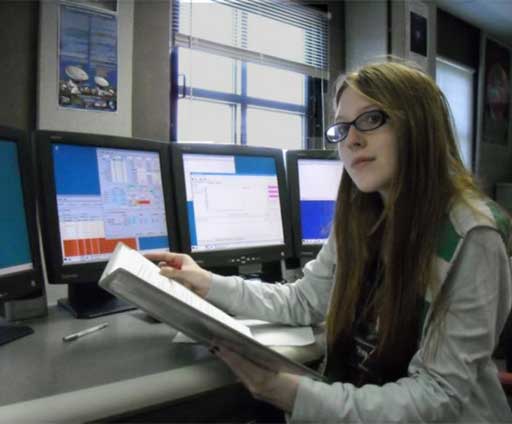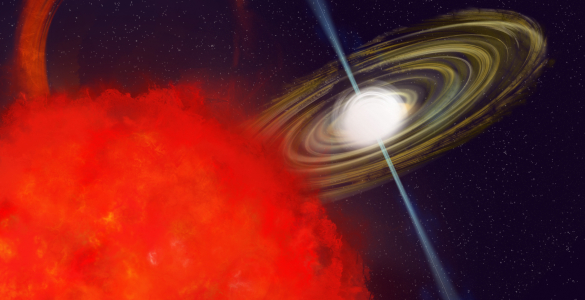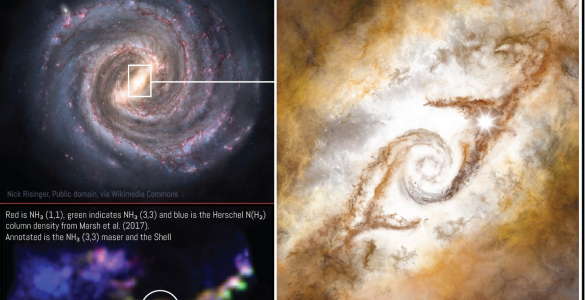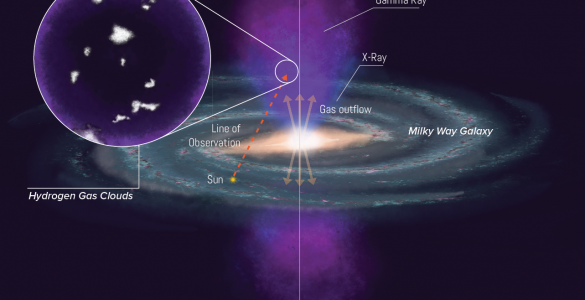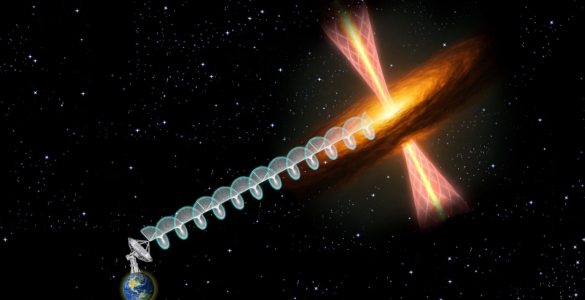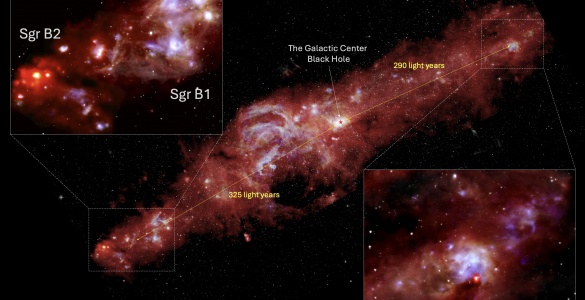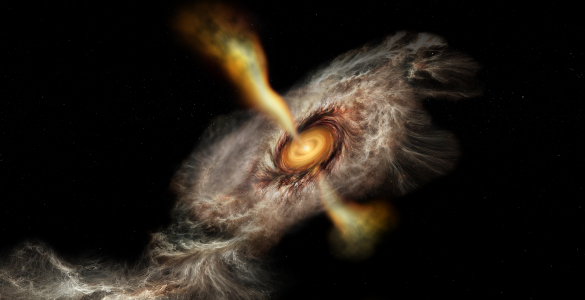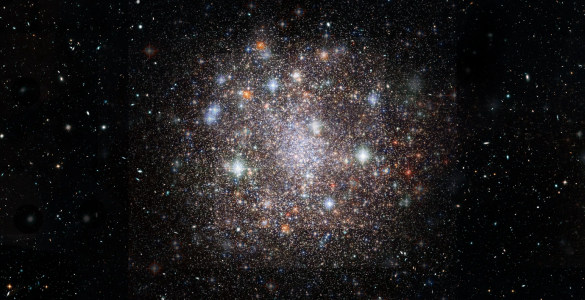A West Virginia high-school student has discovered a new pulsar, using data from the giant Robert C. Byrd Green Bank Telescope (GBT).
Shay Bloxton, 15, a participant in a project in which students analyze data from the radio telescope, spotted evidence of the pulsar on October 15. Bloxton, along with NRAO astronomers observed the object again one month later. The new observation confirmed that the object is a pulsar, a rotating, superdense neutron star. Bloxton is a sophomore at Nicholas County High School in Summersville, West Virginia.
“I was very excited when I found out I had actually made a discovery,” Bloxton said. She went to Green Bank in November to participate in the follow-up observation. She termed that visit “a great experience.”
“It also helped me learn a lot about how observations with the GBT are actually done,” she added.
The project in which she participated, called the Pulsar Search Collaboratory (PSC), is a joint project of the National Radio Astronomy Observatory (NRAO) and West Virginia University, funded by a grant from the National Science Foundation.
Pulsars are known for their lighthouse-like beams of radio waves that sweep through space as the neutron star rotates, creating a pulse as the beam sweeps by the Earth. First discovered in 1967, pulsars serve as valuable natural “laboratories” for physicists studying exotic states of matter, quantum mechanics and General Relativity. The GBT, dedicated in 2000, has become one of the world’s leading tools for discovering and studying pulsars.
The PSC, led by NRAO Education Officer Sue Ann Heatherly and Project Director Rachel Rosen, includes training for teachers and student leaders, and provides parcels of data from the GBT to student teams. The project involves teachers and students in helping astronomers analyze data from 1500 hours of observing with the GBT. The 120 terabytes of data were produced by 70,000 individual pointings of the giant, 17-million-pound telescope. Some 300 hours of the observing data were reserved for analysis by student teams.
The student teams use analysis software to reveal evidence of pulsars. Each portion of the data is analyzed by multiple teams. In addition to learning to use the analysis software, the student teams also must learn to recognize man-made radio interference that contaminates the data. The project will continue through 2011. Teachers interested in participating in the program can learn more at this link.
For Bloxton, the pulsar discovery may be only her first in a scientific career. “Participating in the PSC has definitely encouraged me to pursue my dream of being an astrophysicist,” she said, adding that she hopes to attend West Virginia University to study astrophysics.
Late last year, another West Virginia student, from South Harrison High School, Lucas Bolyard, discovered a pulsar-like object called a rotating radio transient. His discovery also came through participation in the PSC.
The National Radio Astronomy Observatory is a facility of the National Science Foundation, operated under cooperative agreement by Associated Universities, Inc.
Contact:
Dr. Rachel Rosen, PSC Project Director
(304) 456-2385
rrosen@nrao.edu






